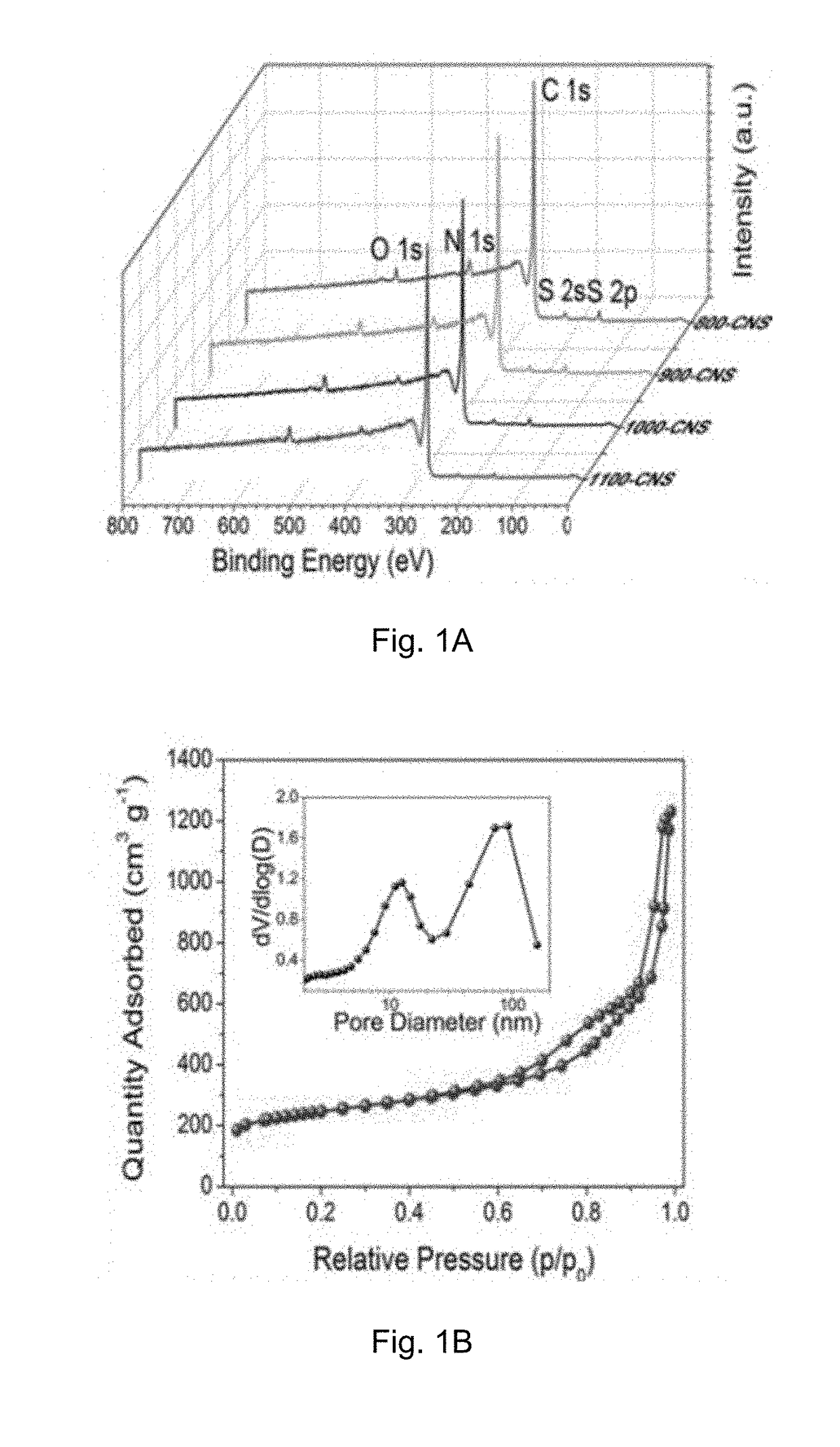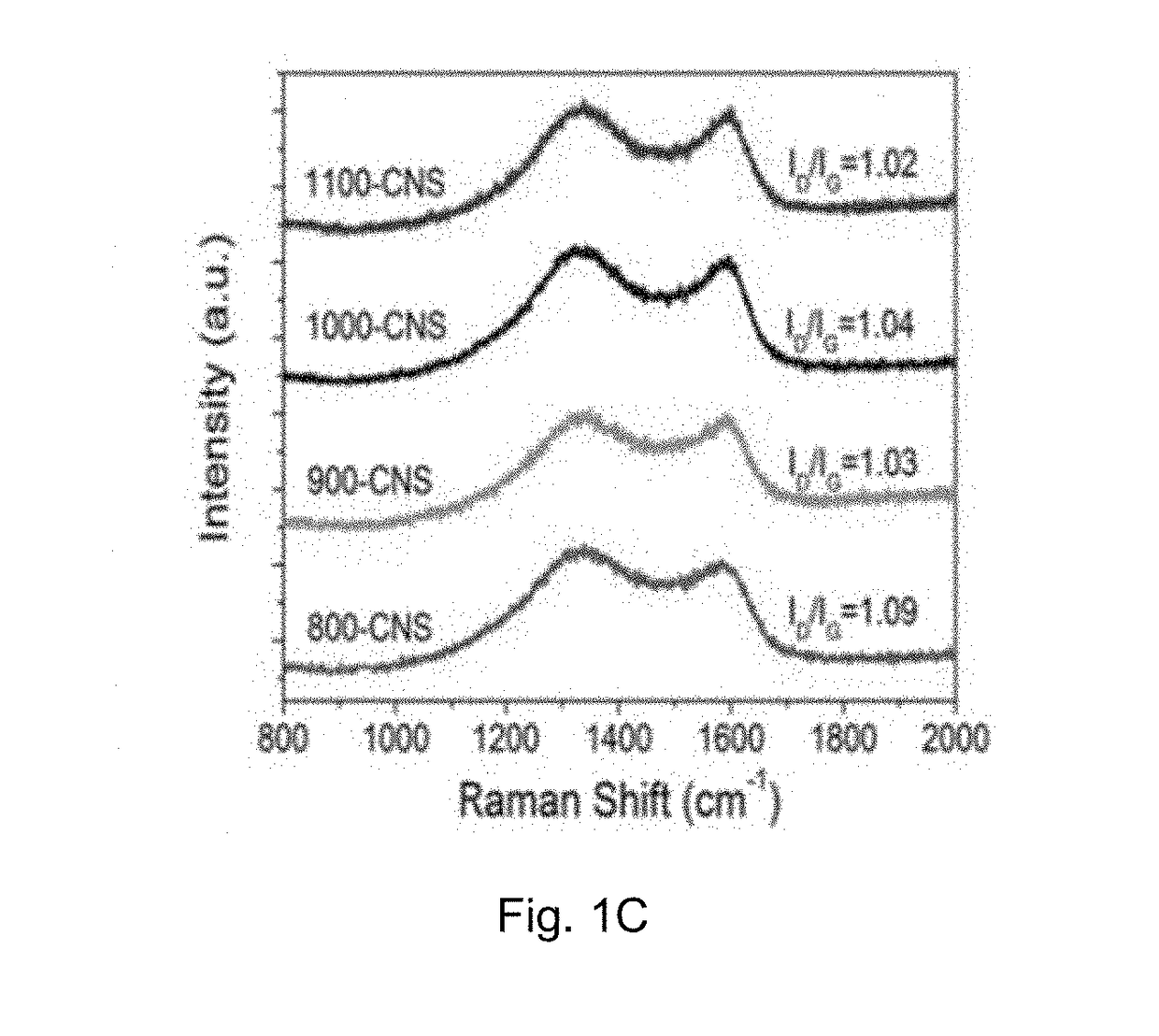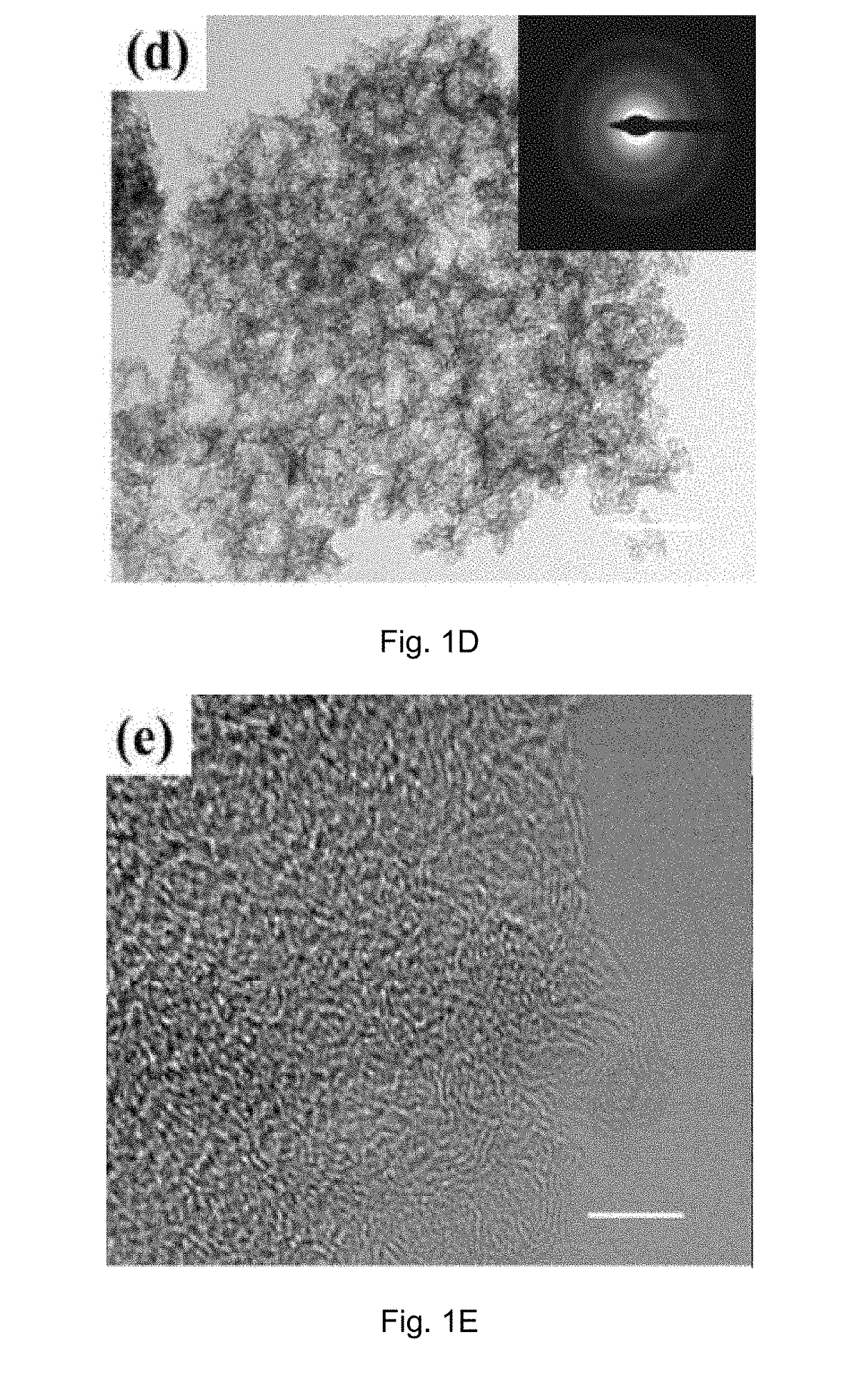Method for preparing hierarchically porous doped carbon material and its use
- Summary
- Abstract
- Description
- Claims
- Application Information
AI Technical Summary
Benefits of technology
Problems solved by technology
Method used
Image
Examples
example 1a
[0080]Preparation of Hierarchically Porous Doped Carbon Materials of the Present Invention
[0081]The fabrication of hierarchically porous N, S dually-doped carbon materials was achieved by mixing silica spheres embedded in polymerized and cross-linked carbon source and dopant source together with Teflon powder (5 μm), followed by a direct pyrolysis procedure (FIG. 5). The Teflon powder can decompose into tetrafluoroethylene when subject to high temperatures under inert atmosphere, which will react with the generated H2O during the polymerization of sucrose as carbon source to release HF and then to etch the SiO2 in-situ (Conesa, J. and Font, R., Polym. Eng. Sci. 41, 2137-2147, 2001, Singh D. K. et al., Angew. Chem. Int. Ed. 55, 2032-2036, 2016).
[0082]More specifically, the hierarchically porous N, S dually-doped carbon material (CNS) was synthesized using as a hard template method. Typically, 1 g silica powder (fumed, particle size ca. 0.2-0.3 μm, Sigma-Aldrich) was dispersed into 30...
example 1b
[0083]Physicochemical Characterization of the Carbon Material Prepared in Example 1A
[0084]The crystal structure of the catalyst was identified by a Bruker D2 Phaser X-ray diffractometer with Cu Kα radiation (λ=0.15418 nm) operating at 30 kV and 10 mA, respectively. Raman scattering measurements were performed with a multichannel modular triple Raman system (Renishaw Co.) with confocal microscopy at room temperature using the 633 nm laser. The morphology and microstructure of the samples were revealed by a JEOL-2001F field-emission TEM, and the accessory EELS was used to determine to composite elements. XPS analyses were conducted on an ESCALAB 250 photoelectron spectroscopy (Thermo Fisher Scienctific) at 1.2×10−9 mbar using Al Kα X-ray beam (1486.6 eV). The XPS spectra were charge corrected to the adventitious C 1s peak at 284.5 eV. TGA were carried out on a TA #SDT Q600 analyser at 30-800° C. with an O2 flow of 40 mL / min. The nitrogen adsorption and desorption isotherms were charac...
example 1c
[0088]ORR and OER Bi-Functional Performances of the Carbon Material Prepared in Example 1A
[0089]All electrochemical measurements were carried out on a CHI 760D electrochemical workstation integrated with a RRDE-3A rotating ring disk electrode apparatus in a typical 3-eletrode system, in which a glassy carbon electrode (GCE, 3 mm in diameter) loaded with different catalysts was used as working electrode, with a Ag / AgCl (in 3 M KCl) electrode and a Pt mesh as reference and counter electrode, respectively. The recorded potential was converted to a reversible hydrogen electrode (RHE). 0.1 M KOH or 0.1 M HClO4 solution served as the electrolyte for ORR measurements. The loading masses for metal-free catalysts were 140 μg cm−2 for alkaline solution and 600 μg cm−2 for acidic electrolyte. Pt / C (Alfa Acesar, 20 wt.-%) with a loading mass of 140 μg cm−2 was used for reference. All the ORR currents presented in the figures are Faradaic currents, i.e., after correction for the capacitive curre...
PUM
 Login to View More
Login to View More Abstract
Description
Claims
Application Information
 Login to View More
Login to View More - R&D
- Intellectual Property
- Life Sciences
- Materials
- Tech Scout
- Unparalleled Data Quality
- Higher Quality Content
- 60% Fewer Hallucinations
Browse by: Latest US Patents, China's latest patents, Technical Efficacy Thesaurus, Application Domain, Technology Topic, Popular Technical Reports.
© 2025 PatSnap. All rights reserved.Legal|Privacy policy|Modern Slavery Act Transparency Statement|Sitemap|About US| Contact US: help@patsnap.com



